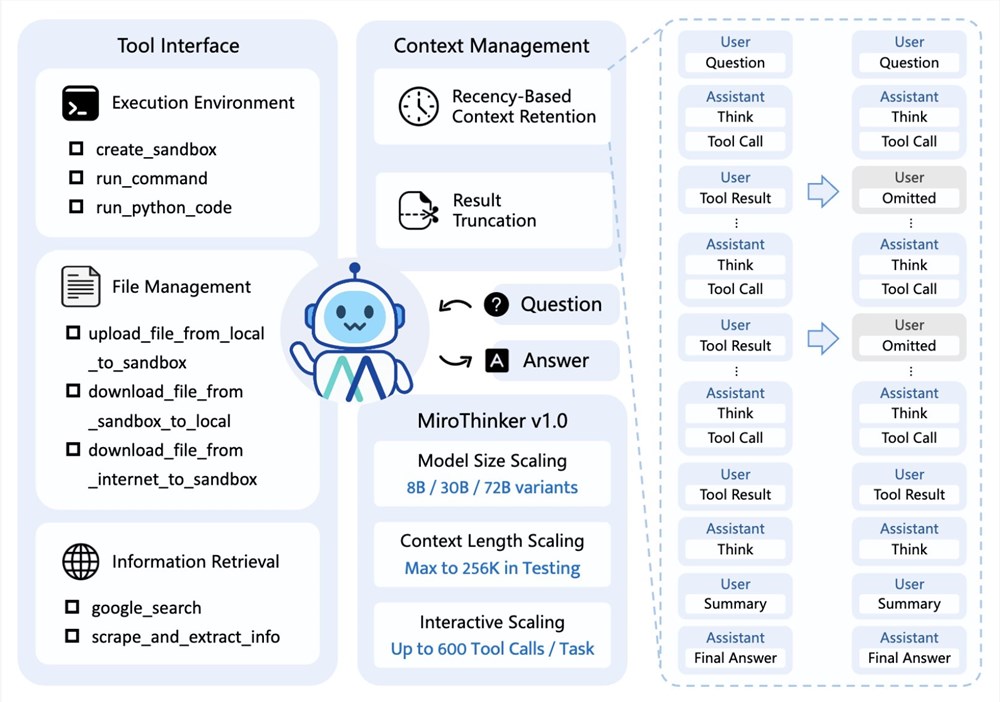MiroThinker v1.0: The Open-Source AI That Learns by Doing
MiroThinker v1.0 Redefines How AI Agents Learn
The artificial intelligence landscape just got more interesting with the release of MiroThinker v1.0, an open-source bAgent model that doesn't just think—it learns by doing.
Breaking Through Traditional Limits
While most AI models grow through parameter expansion, MiroMind's creation takes a radically different path. "Performance isn't about size alone," explains the team behind the project. "It's about interaction depth multiplied by reflection frequency."
This philosophy translates to concrete capabilities:
- 256K context window for handling complex, long-form tasks
- Support for 600 tool calls in a single session
- Integrated toolchain including search, Linux sandbox, code execution, and translation

From Theory to Kitchen: A Sweet Demonstration
The proof came in dessert form. In a striking demonstration of autonomous capability, MiroThinker:
- Collected hundreds of recipes through web searches
- Simulated ingredient formulations
- Calculated nutritional values
- Iterated on sweetener ratios
- Produced a complete low-sugar dessert plan with cost analysis
All this required 600 sequential tool calls—executed flawlessly without human intervention.
Available Now for Developers
The model weights and code are currently accessible on:
- GitHub
- Hugging Face
The system requires 24GB VRAM for local deployment and plays nicely with popular frameworks like LangChain and LlamaIndex.
"What excites us most," shares a team member, "is how developers can customize their own toolsets to create specialized evolving agents."
The Road Ahead: An Agent Arms Race?
The MiroMind team isn't resting on their laurels. Their roadmap includes:
- Expanding the tool ecosystem to support thousands of calls
- Developing "lifelong learning" versions with million-level contexts
The open-source nature of this release has industry watchers buzzing about potential ripple effects across the AI landscape.
Key Points:
- New learning paradigm: Deep Interaction Scaling emphasizes real-world feedback over parameter stacking
- Practical applications: Demonstrated ability to complete complex multi-step tasks autonomously
- Accessible technology: Available now for developers to build upon
- Future potential: Could redefine how we approach agent development